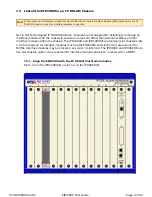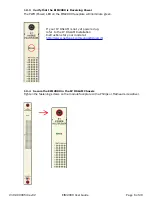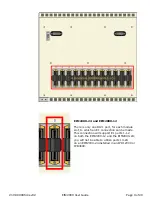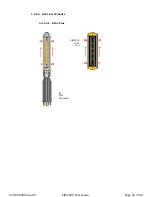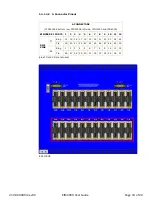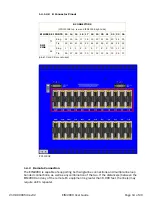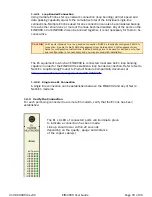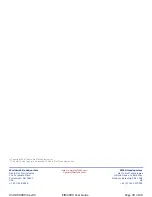
2.2 Clock Source
Clock source refers to the timing origination for E1 transmission links.
2.2.1 Local (default-provider mode)
Timing is derived from an oscillator on board the EIM2000.
2.2.2 Loop (default-subscriber mode)
Timing is derives from an intermediate device on the E1 line.
2.3 Frame Type
Frame type is the E1 data encapsulation method. A frame consists of 248 bits (8-bit samples of
each of the 31 E1 data channels plus a synchronization bit) transmitted at a rate of 8,000 frames
per second (1,984 kbps) across the E1 line. EIM2000 frame type configuration options are Cyclic
Redundancy Check or No Cyclic Redundancy Check.
2.3.1 Cyclic Redundancy Check (default)
Cyclic Redundancy Check (CRC) detects line errors and scrutinizes data integrity across the E1
line by appending a CRC character to the end of each data block. The character is a
hexadecimal value calculated from the contents of the data block; if a different value is
calculated at the receiving end than was appended at the originatation point, retransmission is
requested.
2.4 Line Code
Line code is the E1 mode of transmission. The two line code options for the EIM2000 both fall within
the International Telecommunication Union - Telecommunication Standardization Sector (ITU-T)
G.703 Standards for Transmission Facilities.
2.4.1 High Density Binary 3 (default)
High Density Binary 3 (HDB3) line encoding uses bipolar violations to guarantee the presence
of pulses in the E1 line thereby helping to prevent loss of synchronization between the
EIM2000 and remote E1 equipment. HDB3 accommodates the minimum ones density
requirement in the European public network.
2.4.2 Alternate Mark Inversion
Alternate Mark Inversion (AMI) alternates positive and negative pulses across the E1 line.
Although AMI links typically encounter long strings of zeros which can potentially cause loss of
synchronization between E1 units, Net to Net Technologies' E1 products meet the European
minimum ones density requirement internally such that, even with AMI, loss of synchronization
is prevented between the EIM2000 and remote E1 equipment, just as it is with HDB3.
N
OTE
Local timing is the default for an EIM2000 in E1 provider mode. Default for an EIM2000 in subscriber mode is
Loop and cannot be modified.
210-0000054 rev0
2
EIM2000 User Guide Page 18 of 20

